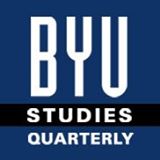BYU Studies Quarterly

Article Title
Seer Stones, Salamanders, and Early Mormon "Folk Magic" in the Light of Folklore Studies and Bible Scholarship
Keywords
Mormon studies, folklore studies, folk magic, Bible scholarship
Abstract
The 2015 publication of an Ensign article on, and especially photos of, one of Joseph Smith’s seer stones still owned by The Church of Jesus Christ of Latter-day Saints caused quite a sensation in the blogosphere. Many responses focused on the “weirdness” of the stone and its use, the ostensibly alien nature of this odd relic from the past, so out of place in modern religion, and posited it as a troubling problem in need of explanation. Mormon studies as a discipline has struggled to make sense of seer stones too. These responses are understandable, considering how often communities tend to presume little change in ritual practice over time and how identity groups tend to see others’ actually quite similar practices—separated by time or culture—as superstitious and our own as pious and commonsensical. Patrick Mason reminds us, “When we step out of [a] time machine [into the past], it is we, not the people whom we encounter, who are out of place. Disoriented though we may be, our first responsibility is to get to know them on their own terms.”
Recommended Citation
Eliason, Eric A.
(2016)
"Seer Stones, Salamanders, and Early Mormon "Folk Magic" in the Light of Folklore Studies and Bible Scholarship,"
BYU Studies Quarterly: Vol. 55:
Iss.
1, Article 5.
Available at:
https://scholarsarchive.byu.edu/byusq/vol55/iss1/5
